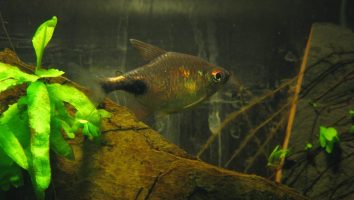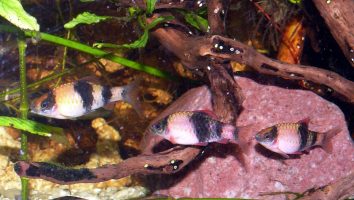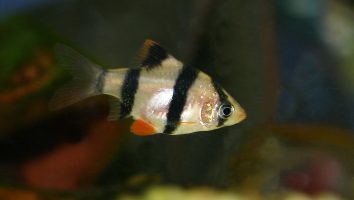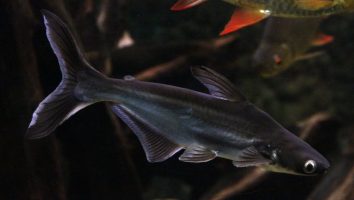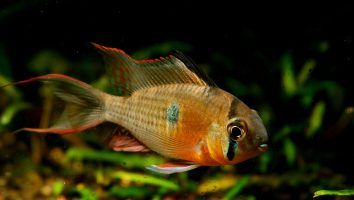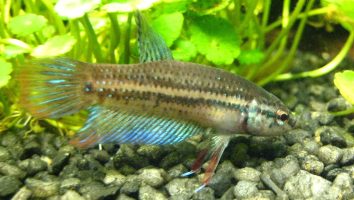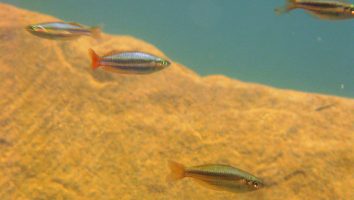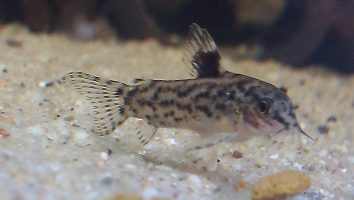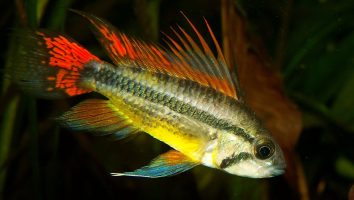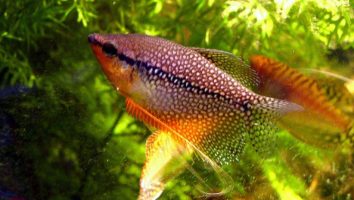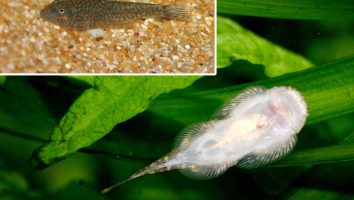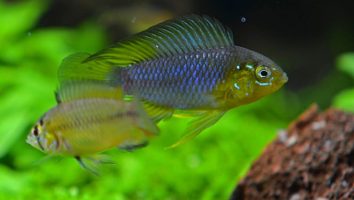The Common Pleco is a freshwater fish that is popular in the aquarium trade. They are known for their hardiness and their ability to eat algae.
While they are a popular choice for many aquarists, they can grow to be quite large and are not suitable for all tanks.
In this guide, we will go over everything you need to know about Common Pleco care. We will cover their diet, tank size, lifespan, and more!
Table of contents
Species overview
Common plecos (scientific name: Hypostomus plecostomus) are a type of armored catfish that are native to South America. They are most commonly found in the Amazon River basin but have also been spotted in other river systems in Peru, Ecuador, Colombia, and Venezuela.
These fish are nocturnal by nature and prefer to stay hidden during the day. This is why they are often called “cavefish” because they will often find small caves or other hiding spots to stay in.
Common plecos are omnivores and will eat pretty much anything they can find. In the wild, this includes algae, small invertebrates, and plants.
In the aquarium scene, common plecos are one of the most popular choices. This is because they are very hardy fish that can survive in a wide range of conditions. They are also very good at keeping algae under control, which is something that many aquarium owners struggle with.
Appearance
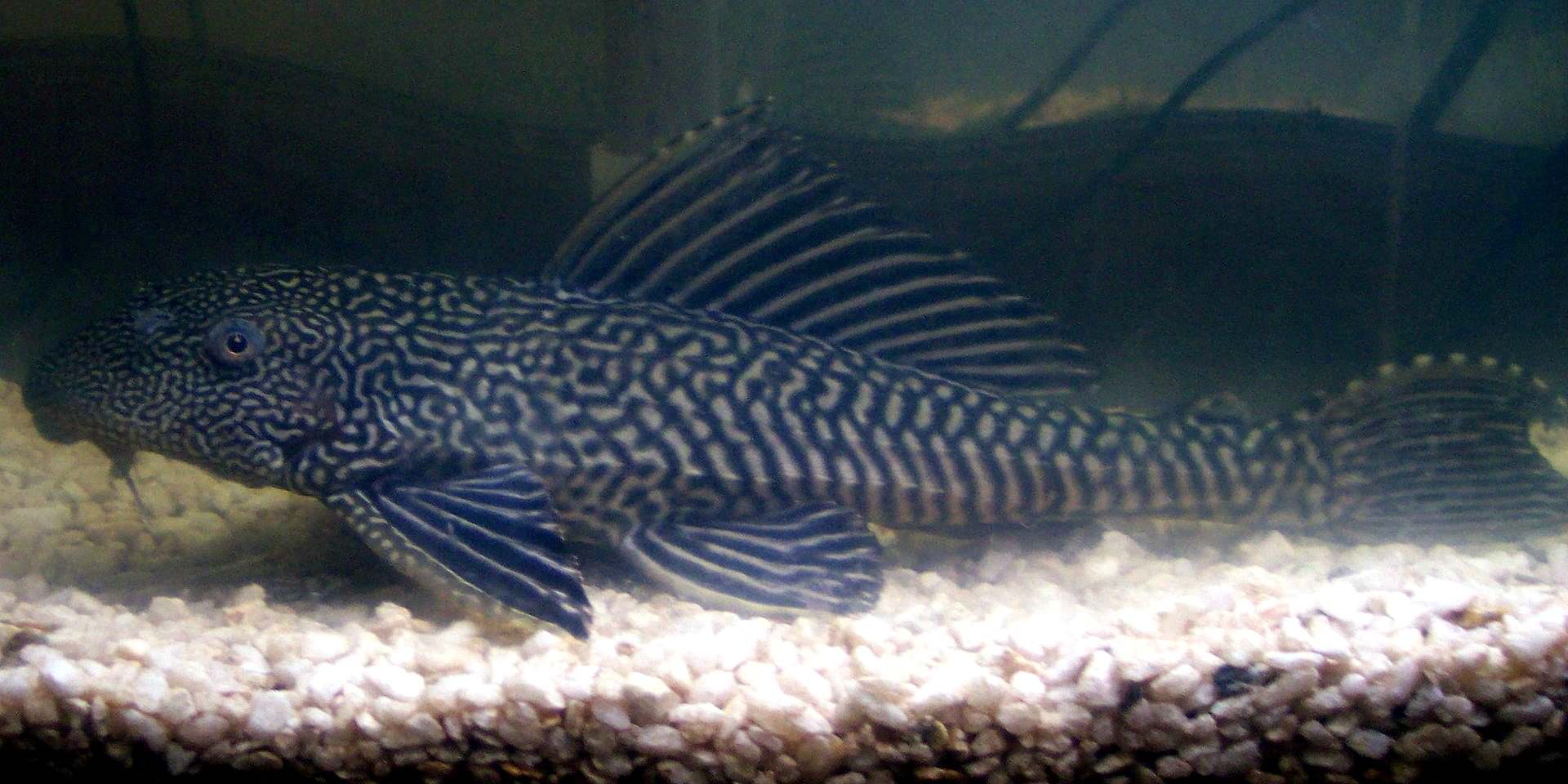
The Common Pleco is a freshwater fish that’s easily recognizable thanks to its unique features. The first thing you’ll notice about this fish is the large suction cup-like mouth that’s located on the underside of its head.
This suction cup is used to help the pleco attach to surfaces as it feeds on algae.
The body of the Common Pleco is very long and slender. It’s covered in large scales that have a tough texture. The color of this fish can vary quite a bit, but it’s usually some shade of brown or green.
The dorsal fin of the Common Pleco is tall and triangular in shape. The anal fin is much shorter and located on the underside of the fish near the tail.
The caudal fin is forked and symmetrical.
One of the most interesting features of the Common Pleco is the long barbels that extend from its mouth. These barbels are used to help the pleco find food in murky water.
Lifespan
The average lifespan of a common pleco is 10 to 15 years. However, there have been reports of plecos living up to 20 years in captivity.
As with most fish, the lifespan of a common pleco is greatly impacted by the quality of care it receives. Things like water quality, diet, and stress can all shorten their lifespan.
Size
The Common pleco can grow to be around 18 inches in length, though they are typically around 12 inches long.
Tank
Tank Size
The recommended tank size for common plecos is 50 gallons. This is assuming you’re only keeping one fish since they can get quite large (up to 18 inches).
If you want to keep more than one common pleco in the same tank you’ll need to add an additional 50 gallons for each fish. So, for two fish you’ll need a 100 gallon tank, for three fish you’ll need a 150 gallon tank, and so on.
Water Parameters
The common pleco is a freshwater fish that is widely distributed throughout South America. In the wild, they inhabit a variety of habitats including rivers, streams, and lakes.
This hardy fish is a popular choice for many beginner aquariums because it is relatively easy to care for. However, like all fish, the common pleco needs clean water to stay healthy and thrive.
To maintain a healthy environment for your pleco, it is important to keep the following water parameters within the ideal range.
- Water temperature: 70 to 80 degrees Fahrenheit
- pH levels: 6.5 to 7.5
- Water hardness: 2 to 12 dGH
- Alkalinity Levels: 4-8 dKH
What To Put In Their Tank
As we mentioned earlier, these fish come from a variety of habitats. This means that they’re not too picky when it comes to their tank setup.
We recommend a gravel substrate with some rocks and driftwood thrown in. This will give them plenty of places to hide and explore (which plecos love to do).
You can also add some plants to their habitat as well. Leopard Plecos are known to nibble on vegetation so you’ll want something that can bounce back (Hornwort, Water Wisteria, or Java Moss are all great choices). Don’t feel obligated to go with a heavily planted tank for this species though.
Common Diseases
While plecos are definitely on the hardier side, they can still get sick just like any other fish.
One of the most common illnesses that affect plecos is hole-in-the-head disease. This is a condition that’s caused by poor water quality and the presence of activated carbon in the tank.
It presents itself as one or two pits/holes in the skin of your pleco’s head. While it’s almost always curable, it will usually leave some scarring on your fish.
Another disease that plecos are prone to is ich. This is a parasite that can affect any fish, but it’s especially common in plecos.
It will show itself as white spots on the body, fish, and gills of your fish. There are plenty of ich treatment guides online, so we won’t go into detail here.
Suffice to say, it’s something you need to take very seriously if it affects your pleco.
The best way to prevent these diseases is to maintain the quality of the water in your tank. A tank with clean and stable water conditions is less likely to cause sickness in your fish.
Behavior & Temperament
As their name suggests, Common plecos are very peaceful fish. They’re not interested in fighting with tank mates and would rather spend their time grazing on algae.
These fish are nocturnal, so you won’t see them much during the day. They’ll spend their days hiding in dark corners or inside caves. Once the lights go out, they’ll come out to scavenge for food.
You can often find them eating algae off the glass or sifting through the substrate for food. They’re not picky eaters, so they’ll eat just about anything they can find.
Common plecos are very shy fish. They’re not interested in interacting with their tank mates or humans. In fact, they’re so shy that they’ll often hide when someone comes into the room.
Tank Mates
The common pleco is a peaceful fish that will get along with most tank mates. They’re not fussy when it comes to water conditions either, which makes them even easier to keep.
As long as you have a tank that’s big enough, you can pretty much add any fish you want. Just avoid putting them with fish that are too small. The common pleco has a big appetite and might see them as food!
Some compatible tank mates for common plecos include:
- Angelfish
- Oscar Cichlid
- Green Terror Cichlid
- Blood Parrot Cichlid
- Jack Dempsey Cichlid
- Convict Cichlid
- Firemouth Cichlid
- Texas Cichlid
- pleco
Breeding
The common pleco is a fairly easy fish to breed. They are typically good parents and don’t eat their young.
To start, you’ll need a breeding tank that’s at least 30 gallons. The tank should be decorated with plenty of hiding places. Driftwood is a good option. Be sure to add a sponge filter as well.
Common plecos are egg-scatterers. The female will lay her eggs on a hard surface, and the male will fertilize them. Once the eggs are laid, the male will guard them.
The eggs take about five days to hatch. When they do, the fry will be very small. They will feed on the algae in the tank. You can supplement their diet with baby brine shrimp.
As the fry grow, you can start to feed them pellets and other foods. They should be ready to be moved to a regular tank within a few months.
Conclusion
The Common Pleco is a great fish for anyone who is looking for an algae eater that is low maintenance. They are hardy fish that can adapt to a variety of water conditions, which makes them ideal for beginner fishkeepers.
Although they are peaceful fish, they can be territorial with other plecos. It is best to keep them with other peaceful fish that are the same size or larger.
The Common Pleco is a great addition to any freshwater tank!

